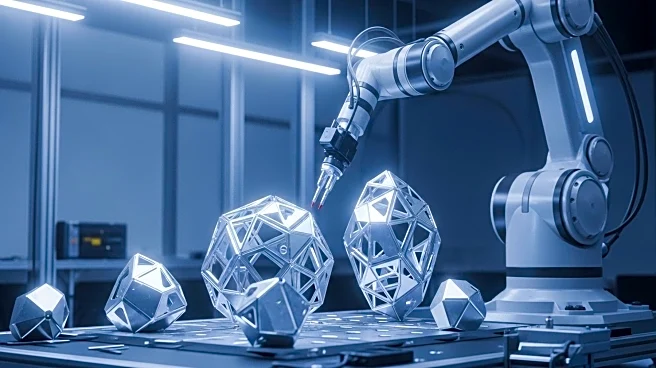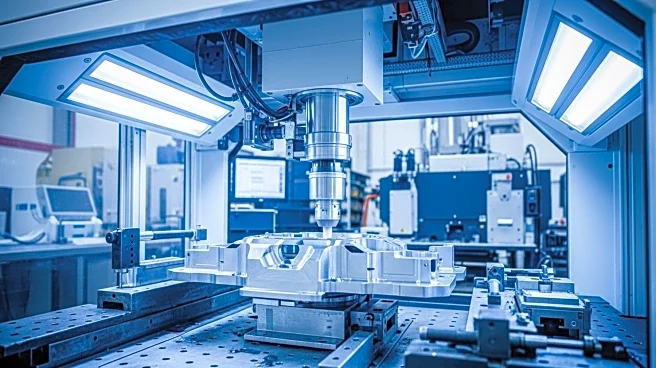What is the story about?
What's Happening?
Recent breakthroughs in materials science have led to the development of self-assembling materials, which can automatically arrange themselves into predetermined shapes and structures. These materials include DNA-based systems, shape-memory alloys, and magnetic particle systems. Researchers at institutions like MIT and Harvard are exploring the potential of these materials in various fields, including aerospace and medicine. Self-assembling components for spacecraft and drug delivery systems are being tested, promising significant cost reductions and improved efficiency.
Why It's Important?
The development of self-assembling materials represents a major shift in manufacturing and construction processes. These materials could lead to more efficient production methods, reducing costs and increasing precision. In aerospace, self-repairing components could lower mission costs by eliminating redundant systems. In medicine, targeted drug delivery systems could enhance treatment effectiveness while minimizing side effects. However, challenges such as material compatibility and quality control remain, requiring further research and development.
AI Generated Content
Do you find this article useful?














